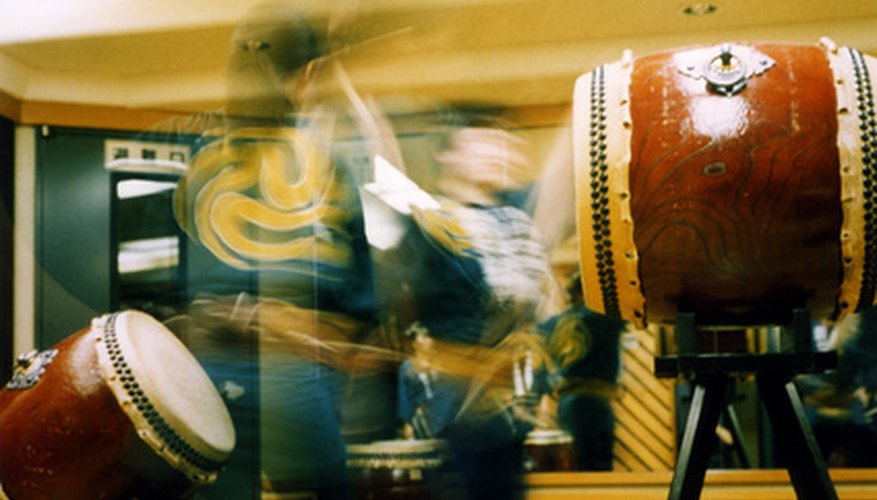Taiko drums have existed for thousands of years as both a Japanese court instrument and as a tool on the battlefield. Today taiko performances are held in "kumi-daiko" groups, many of which tour across the United States. The modern taiko sound and influence can be traced back to the 1950s to the creator of the kumi-daiko movement. This fusion of ancient musical techniques with modern rhythm and materials has created an entirely new sound that's still uniquely taiko.
History
According to Taiko.com, taiko's earliest origins can be traced back to more than a thousand years ago in Japan: "Japanese taiko as we know them today bear strong resemblance to Chinese and Korean instruments, which were probably introduced in...300--900AD. It has been speculated that the predecessor of the tsuzumi style of taiko may come from as far as India, and came to Japan along with Buddhism." Not only employed on the battlefield as a method by which to strike fear into the opposing forces, taiko drums were also used in the imperial court to play "gagaku" music, which is still played today.
1950s Influences
After World War II, Japanese culture began to decline as more Japanese citizens started to adapt to Western ways. The birth of taiko music as we have come to know it today is attributed to Daihachi Oguchi, a jazz drummer who created the kumi-daiko movement by assembling a collection of taiko drums---traditionally played individually---and playing a traditional piece of music for the Osuwa Shinto shrine in 20th-century jazz style. Another performer, Sukeroku Daiko, formed the first professional taiko group in Japan during the late 1950s, blending classical "hogaku" music with martial arts and dance.
Taiko Today
Today, there are a number of taiko companies that tour Japan, America and other countries all over the world. Three professional companies hail from America, all of which originated in California: San Francisco Taiko Dojo, Kinnara and San Jose Taiko. Several collegiate companies have also formed, the largest of which is Kyodo Taiko.
Taiko Drum Types
There are two main types of taiko drums: The byou-uchi daiko is a drum whose heads are tacked to its sides; shime-daiko drums ("shime-daiko" is taken from the Japanese verb "shimeru," or "to tighten") possess rope-tension heads. Byou-uchi daiko drums cannot be tuned, unlike their shime-daiko counterparts. Drumsticks called "bachi" are used to strike the drumhead. The material the bachi is crafted from dictates what it's supposed to be used for: Hardwood bachi are used primarily for "nagado-daiko" (from the byou-uchi family) drums, while softer and lighter wood bachis are used elsewhere.
- There are two main types of taiko drums: The byou-uchi daiko is a drum whose heads are tacked to its sides; shime-daiko drums ("shime-daiko" is taken from the Japanese verb "shimeru," or "to tighten") possess rope-tension heads.
- The material the bachi is crafted from dictates what it's supposed to be used for: Hardwood bachi are used primarily for "nagado-daiko" (from the byou-uchi family) drums, while softer and lighter wood bachis are used elsewhere.
Taiko Drum Differences
The shape of a taiko drum varies depending on the family it belongs to and its purpose. Byou-uchi drums are generally hollowed out from one piece of wood, while other drums are often composites. "Odaiko" (literally translated, "odaiko" means "large drum") versions are carved from big, old trees and usually can't be moved from their location once created. Shime-daiko drums feature a rope-tension system that lines the circumference of the instrument, although bolts are often used to replace the rope system. Byou-uchi drums can't be tuned, so they lack extra equipment other than the tacks to hold the head in place.
- The shape of a taiko drum varies depending on the family it belongs to and its purpose.
- Byou-uchi drums can't be tuned, so they lack extra equipment other than the tacks to hold the head in place.
